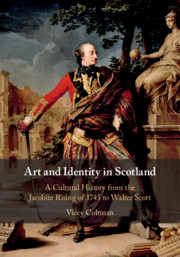Bibliography
Published online by Cambridge University Press: 14 October 2019
- Type
- Chapter
- Information
- Art and Identity in ScotlandA Cultural History from the Jacobite Rising of 1745 to Walter Scott, pp. 263 - 291Publisher: Cambridge University PressPrint publication year: 2019

